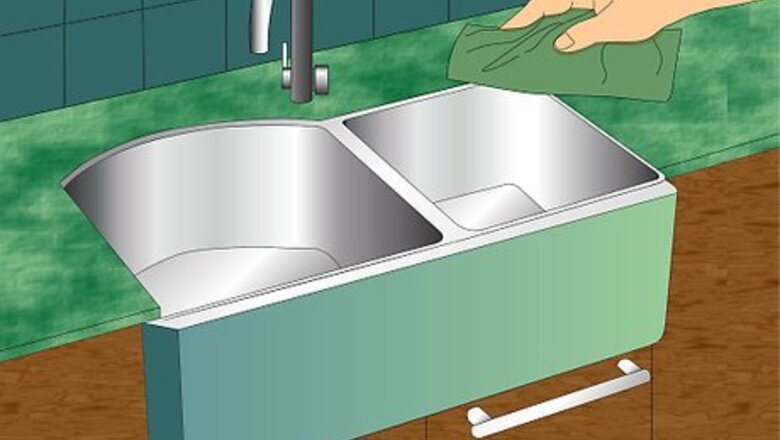
views
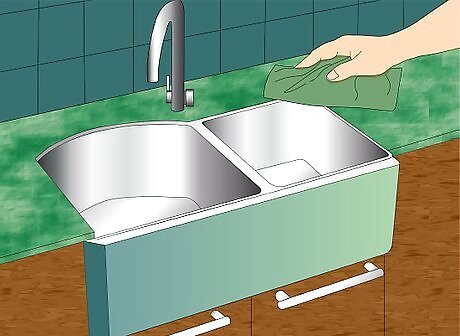
Make sure the rim of the sink is clean and dry. Scrub the rim of your sink and counter with soap and water to get rid of any dirt or grime on the surface.
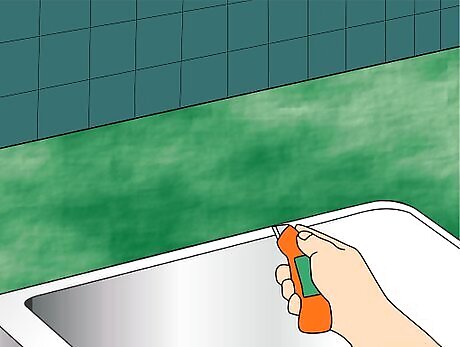
Remove any old caulk from the rim with a utility knife. Position your utility knife between the countertop and the sink and slowly slice through the caulk. Keep the blade flat so you don’t scratch your counters or sink base. If the caulk doesn’t come up easily, apply a caulk remover around the rim of your sink.
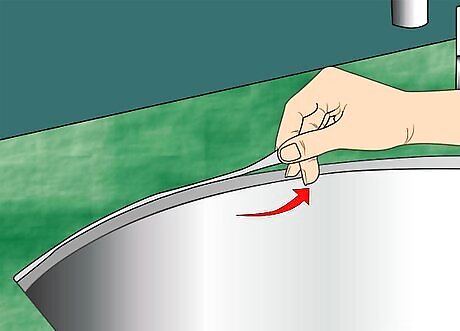
Cut through the old caulk and pull it free from the rim. If you can’t easily pull the caulk free after cutting it, grip it with a pair of needlenose pliers and gently tug it free.

Clean up the area with a paper towel soaked in rubbing alcohol to remove any old caulk residue and to ensure a clean surface ready to accept new caulk.
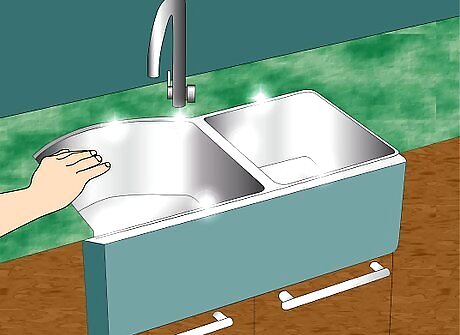
Let the sink's rim and counter edge dry completely. New caulk won’t stick to wet surfaces, so wipe it with a towel and let it air-dry before you start your application.
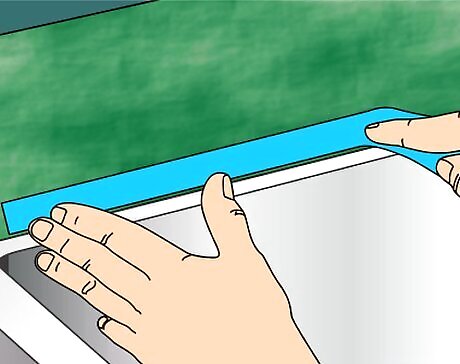
Apply painter's tape to the counter next to the rim, leaving a thin gap for the caulk to be applied. Follow the shape of the corners of your sink with multiple pieces of tape to round off the edges. This will make clean up easier and ensure a straight, even caulk job. You can also use masking tape for this.
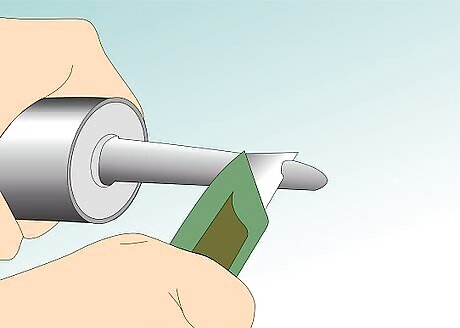
Cut off the tip of the caulk tube with a utility knife. Trim the end of the tube to a 45-degree angle so it fits tightly against the rim of your sink.
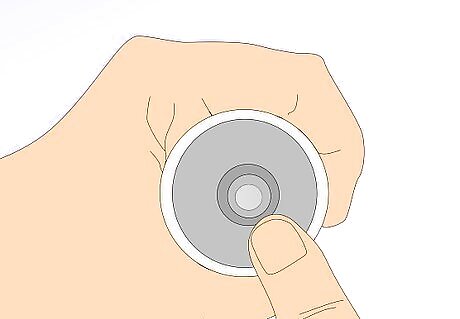
Make the cut only as large as the opening around the sink to avoid having too much caulk come out at once. Since most caulk guns have a seal inside, insert the long metal pin attached to your caulk gun into the tube to puncture it.
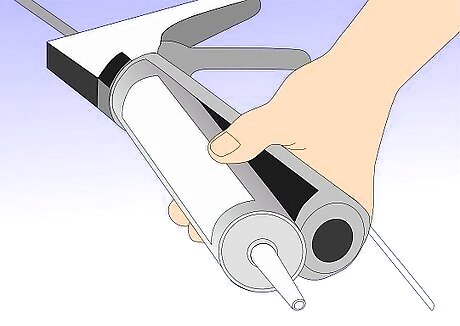
Insert the tip of the caulk tube into a caulk gun and push the plunger of the gun up into the back.
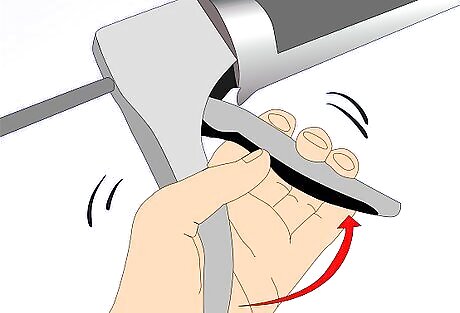
Prime the tube by squeezing the trigger a few times until the caulk rises to the tip of the gun. Wipe the excess caulk off of the tip with some paper towel so you get a clean start on your sink.
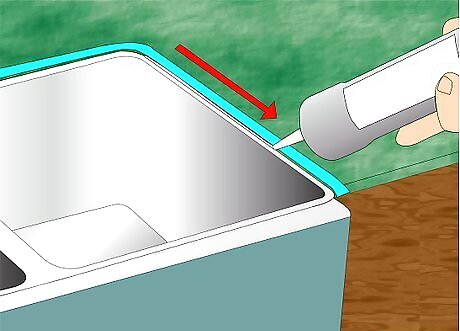
Place the tip of the gun against the edge of the sink's rim where it meets the countertop.
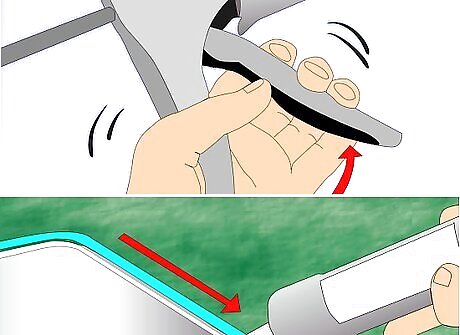
Slowly squeeze the trigger to release a thin line of caulk around the edge of the rim. Only apply slight pressure so you don’t apply too much caulk in one spot.
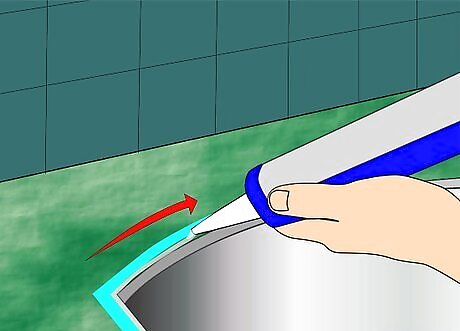
Keep moving the gun as you squeeze the trigger, holding the tip of the gun tight up against the rim for a tight application. Move at a slow, consistent speed so the line of caulk has the same thickness along the entire edge of your sink.
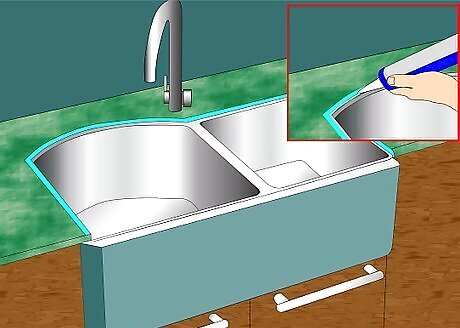
Apply the caulk all the way around the rim of the sink from one end to the next. If you need to stop your line at any time, overlap the start of the new line with where you finished the last one.
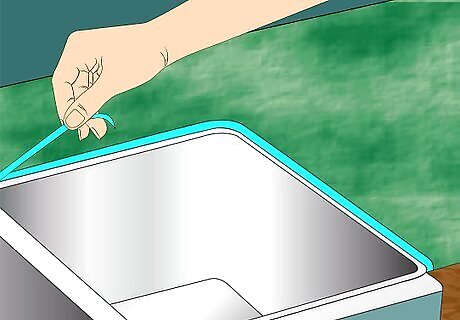
Pull away the painter's tape from the counter. Take the tape off while the caulk is still wet. If you wait until it’s dry, you’ll accidentally pull the caulk off as well. If you remove the tape before the silicone gets tacky, you'll have a perfect caulk line that goes exactly where you want it to go.
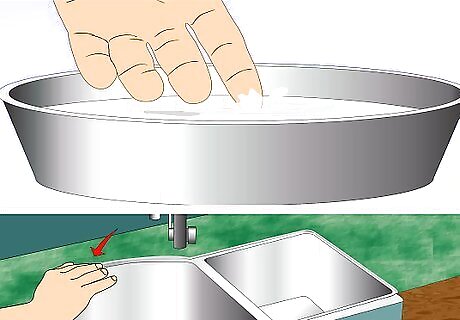
Wet your index finger and smooth the caulk against the edge of the rim and the counter. This will provide a watertight seal. Press the caulk firmly against both edges of the rim and counter, sliding your finger as you go. You can also use a caulk tool to smooth out your line if you don’t want to use your finger.
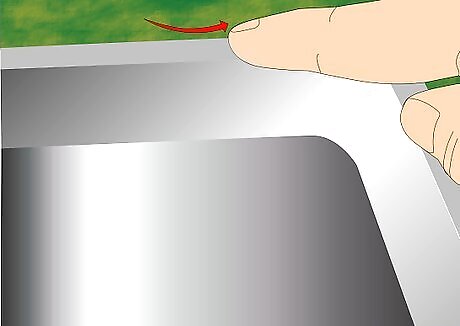
Re-wet your finger frequently to ensure it slides easily against the caulk.
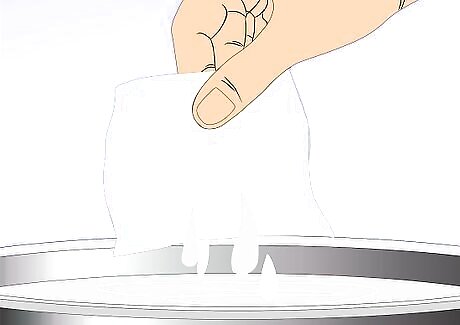
Wet a paper towel with water.
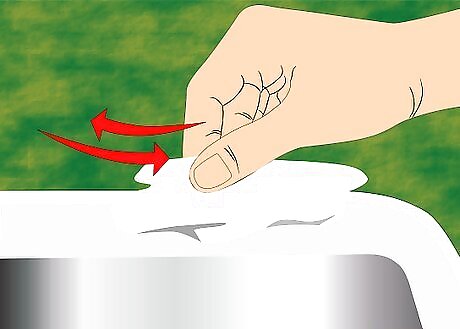
Use the wet paper towel to wipe up any excess caulk or caulk that has strayed too far from the edge of the rim.
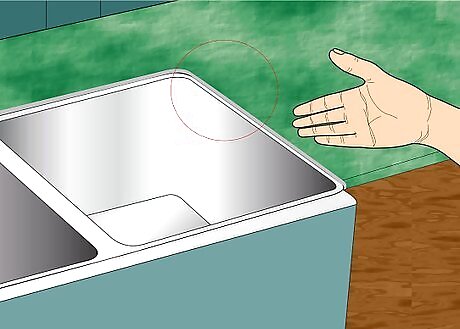
Let the caulk dry for at least 24 hours before using the sink and surrounding area to prevent it from getting wet too early.



















Comments
0 comment